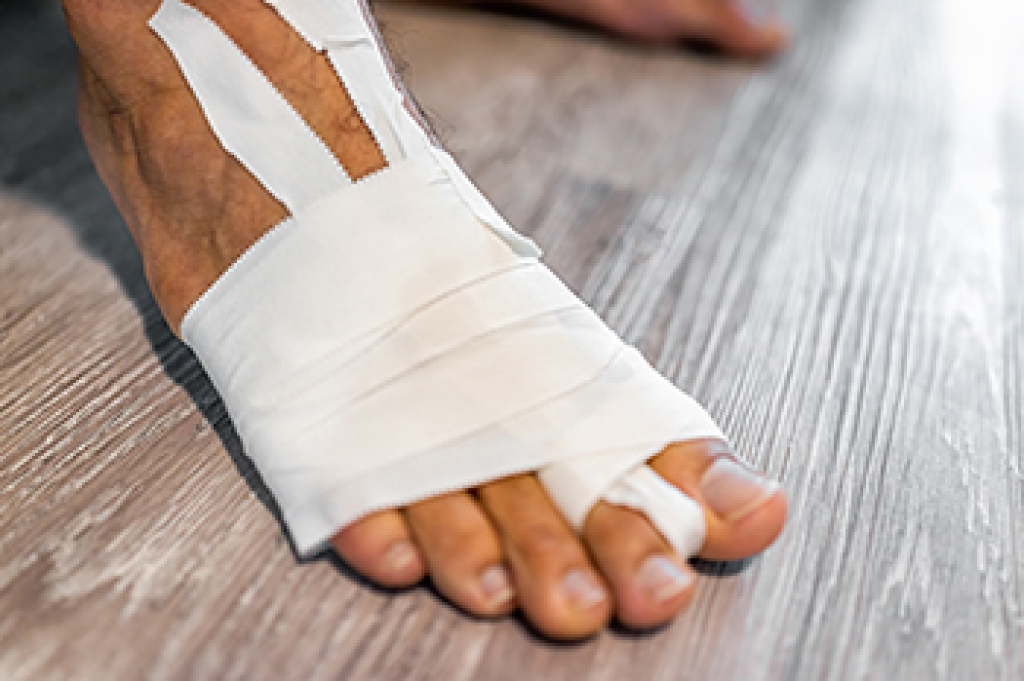
Turf toe is a sprain of the big toe joint that occurs when the toe bends upward too far, often during sports on artificial turf or hard surfaces. Symptoms include pain, swelling, stiffness, and reduced push off strength. The joint may look swollen or bruised, and it may feel sore, unstable, or sharply painful when walking or running. Causes include sudden force, repeated stress, and high impact activities like football, soccer, or dance. A podiatrist can help from the start by taking a detailed history, examining joint movement, and ordering imaging if needed to confirm diagnosis and rule out fractures. Treatment options include taping, immobilization, footwear modification, and anti-inflammatory care, with surgery considered only for severe cases. Early professional care supports healing, protects joint function, and reduces long-term stiffness. If you suspect you have injured your toe it is suggested that you make an appointment with a podiatrist.
Toe pain can disrupt your daily activities. If you have any concerns, contact Michele Kraft, DPM of Toes on the Go. Our doctor can provide the care you need to keep you pain-free and on your feet.
What Causes Toe Pain?
Most severe toe pain is caused due to a sports injury, trauma from dropping something heavy on the toe, or bumping into something rigid. Other problems can develop over time for various reasons.
Toe pain can be caused by one or more ailments. The most common include:
- Trauma
- Sports injury
- Wearing shoes that are too tight
- Arthritis
- Gout
- Corns and calluses
- Hammertoe
- Bunions
- Blisters
- Ingrown toenails
- Sprains
- Fractures (broken bones)
- Dislocations
When to See a Podiatrist
- Severe pain
- Persistent pain that lasts more than a week
- Signs of infection
- Continued swelling
- Pain that prevents walking
Diagnosis
In many cases the cause of toe pain is obvious, but in others, a podiatrist may want to use more advanced methods to determine the problem. These can range from simple visual inspections and sensation tests to X-rays and MRI scans. Prior medical history, family medical history, and any recent physical traumatic events will all be taken into consideration for a proper diagnosis.
Treatment
Treatments for toe pain and injuries vary and may include shoe inserts, padding, taping, medicines, injections, and in some cases, surgery. If you believe that you have broken a toe, please see a podiatrist as soon as possible.
If you have any questions please contact our office located in Carmel, CA . We offer the newest diagnostic and treatment technologies for all your foot and ankle needs.




